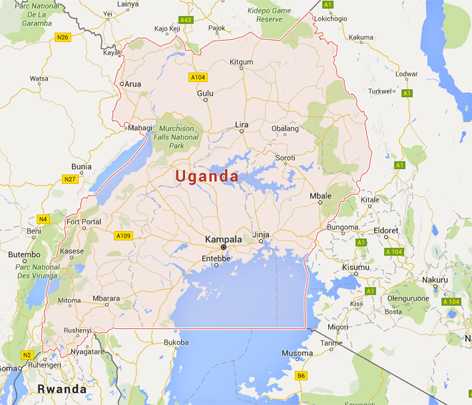Uganda

HIV Epidemic
- 7.1% Estimated HIV prevalence among adults 15–49 Years (2015)
- 23,000 Estimated AIDS-related deaths among adults 15+ Years (2015)
- 774,902 Estimated number of adults living with HIV receiving antiretroviral treatment (ART) (2015)
Source: UNAIDS Global Report 2016
TB Epidemic
- 202/100,000 Estimated TB Incidence (2015)
- 42% of tested TB patients who were HIV-positive (2015)
Source: WHO Global TB Control Report 2016
What We Do
HIV
CDC’s HIV/AIDS office in Uganda works closely with the Ministry of Health (MoH), local government, and academia, and supports faith-based organizations, civil society, and the private sector to complement activities of the severely burdened public health system. CDC plays a critical role in strengthening laboratory services, health information services, HIV prevention and treatment programs, and supports country ownership of these services.
TB
CDC is focused on expanding TB/HIV integrated service delivery, improving diagnosis and treatment of multi-drug resistant TB (MDR TB), and working to strengthen health systems. This includes building laboratory capacity, strengthening epidemiology, surveillance, and health information systems, and monitoring and evaluating program performance.
Discover more about CDC’s work in Uganda by viewing our detailed country profile.
Success Stories
- Real-Time Data Strengthens Uganda’s Efforts to End Mother-to-Child HIV Transmission
- Public-Private Partnership Strengthens Global Laboratory Systems
- Improving Blood Safety in Uganda
More Information
More information about TB in Uganda is available online at WHO’s TB Country Profiles.
More information about CDC’s global health work in Uganda is available online at CDC in Uganda.
- Page last reviewed: September 12, 2017, 01:00 PM
- Page last updated: September 12, 2017, 01:00 PM
- Content source:


 ShareCompartir
ShareCompartir